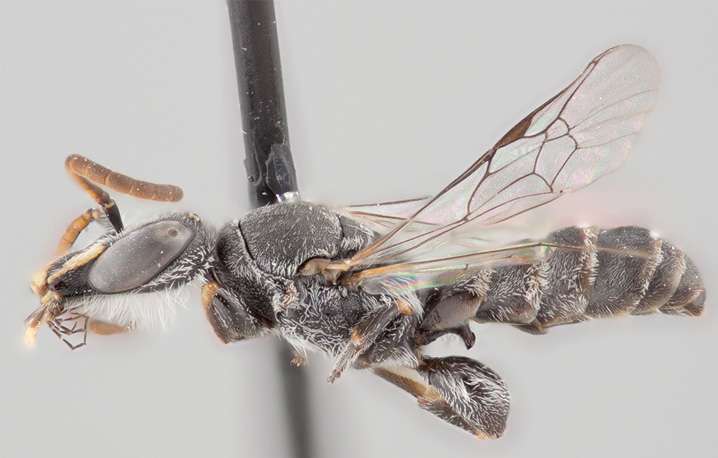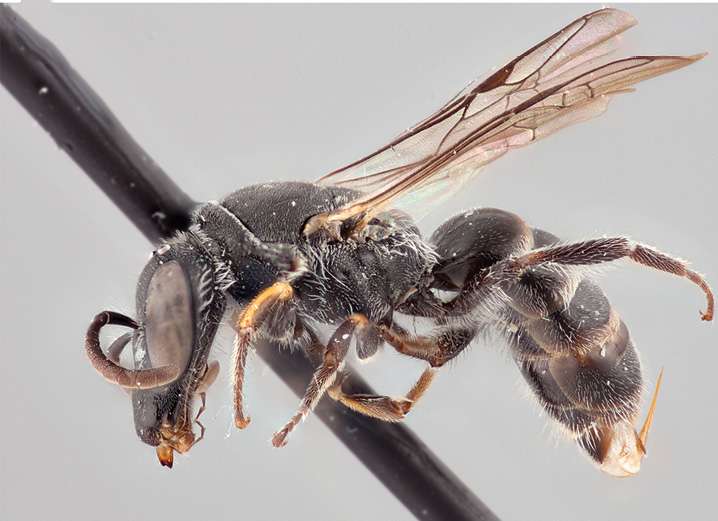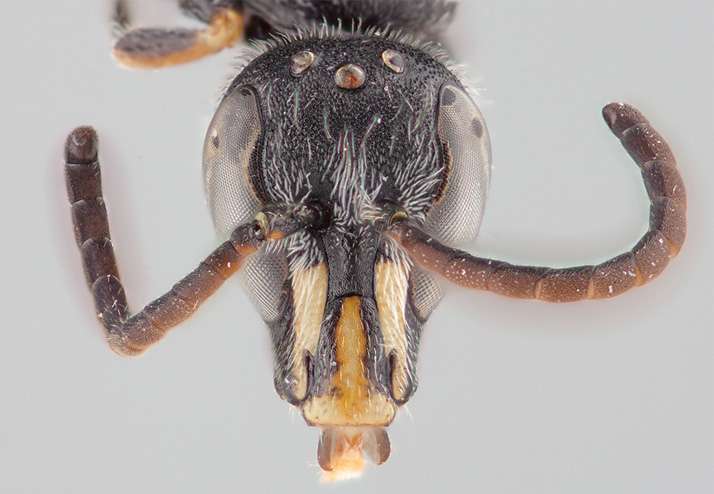One of eight new endemic polyester bees from Chile bears the name of a draconic Pokemon

Among the eight new bee species that Spencer K. Monckton has discovered as part of his Biology Master's degree at York University, there is one named after a popular draconic creature from the Japanese franchise Pokémon. Called the stem-nesting Charizard, the new insect belongs to a subgenus, whose 17 species are apparently endemic to Chile, yet occupy a huge variety of habitats.
The young scientist, who is currently a PhD student at the University of Guelph, studying sawfly systematics and phylogeography, has his work published in the open access journal ZooKeys.
Known as polyester bees, the family to which the new species belong is characterized by the curious secretions these bees produce. Once applied to the walls of their nest cells, the secretion dries into a smooth, cellophane-like lining.
The new bee species are endemic to Chile, yet they occupy a huge variety of habitats ranging from the hyper-arid Atacama Desert in the north, to moist forests of monkey puzzle trees in the south, spanning elevations from the Pacific coast to more than 3200 metres above sea level. All of them are also solitary and nest in hollow plant stems.
Although the new bee species might lack the fiery breath of the dragon-like Pokémon, much like its namesake, it is normally found around mountains. Also, like the fictional species, the new bee has a distinctively long, snout-like face and broad hind legs, with antennae in place of horns.

However, the stem-nesting Charizard bee, as well as the other new species, are tiny creatures that measure between 4 and 7 mm in length. Unlike the predominantly orange colouration of the Pokémon, both males and females are mostly dark brown to black, patterned with variable yellow markings.
Yet, sometimes these yellow markings can turn orange when specimens are preserved, as was the case for the first specimen that Spencer Monckton observed of this species, which, he says, "cemented the comparison".
In his research paper Spencer Monckton not only describes eight new endemic polyester bees, but he also provides thoroughly illustrated keys for identification of both the males and females of each of the species.

More information: Spencer K. Monckton, A revision of Chilicola (Heteroediscelis), a subgenus of xeromelissine bees (Hymenoptera, Colletidae) endemic to Chile: taxonomy, phylogeny, and biogeography, with descriptions of eight new species, ZooKeys (2016). DOI: 10.3897/zookeys.591.7731
Journal information: ZooKeys
Provided by Pensoft Publishers



















